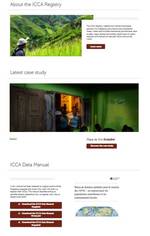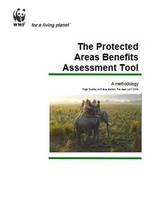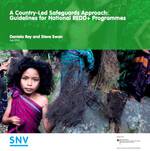Tools
A tool is a resource that supports and guides the implementation of SFM. This section includes all the tools available in the SFM Toolbox, which can be in form of publications, e-learning videos, software etc.
You can browse the Tools through keywords in the free search box or you can narrow the search using the filters on the right side of the page.
The ICCA Registry website is an online information platform for Indigenous and Community Conserved Areas (ICCA), where communities themselves provide data, case studies, maps, photos and stories which result in useful statistics and analysis on featured ICCAs around the world
This document describes a set of practical steps needed for conservation professionals and policy makers to integrate protected areas into the surrounding landscapes, seascapes, and to integrate protected areas into sectoral plans and strategies. This guide provides conservation planners with a concrete set of steps they can take to improve...
This course covers national forest inventory (NFI) reporting in detail and establishes the importance of reporting in the context of REDD+ actions.
Specifically, this course targets: Forest technicians responsible for implementing their country’s NFIs; Forest data analysis practitioners; National forest monitoring teams; Youth and new generations of foresters Students.
In this course...
The national forest monitoring system (NFMS) assessment tool has been developed under the project “Building global capacity to increase transparency in the forest sector (CBIT-Forest)” implemented by Food and Agriculture Organization of the United Nations (FAO) and funded by the Capacity-Building Initiative for Transparency (CBIT) trust fund of the Global...
This guide is designed to help communities and policy-makers informed choices regarding land use, business ventures, and public policy in pastoral areas, particularly the Maasai Steppe and other semi-arid parts of East Africa. It intended to help communities, and outside facilitators, through the processes of managing conflicts over land use;...
This tools aims to identify some of the wider benefits that protected areas provide to human well-being and thus their contribution to poverty reduction. It helps to provide protected area managers and authorities with a methodology to help collate information on the full range of current and potential benefits of...
This publication celebrates the work of the Mountain Partnership - the only United Nations alliance dedicated to improving the lives of mountain communities and their ecosystems - over 15 years. It profiles key players, charts the achievements at global, regional and national level, and showcases success stories around the world....
The global demand for modern bioenergy, and especially liquid biofuels, is rapidly growing, driven mainly by climate change mitigation policies and increasing oil prices. This creates both opportunities and risks for developing countries.
FAO’s Bioenergy and Food Security Criteria and Indicators (BEFSCI) project has developed a set of criteria, indicators, good...
This report presents a cost-benefit framework for accounting for the ecosystem service and economic impacts of forest landscape restoration activities in a way that allows the results to be structured to inform multiple types of restoration decision-making that can help decision makers understand the trade-offs of different restoration scenarios. The...
A carbon-only approach to REDD+ won’t work. It will not help either climate or forests. Ex-post greenhouse gas emissions reductions will not be achieved if investments are not made in the environmental sustainability and social equity of the policies and measures adopted to address the drivers of deforestation and forest...










